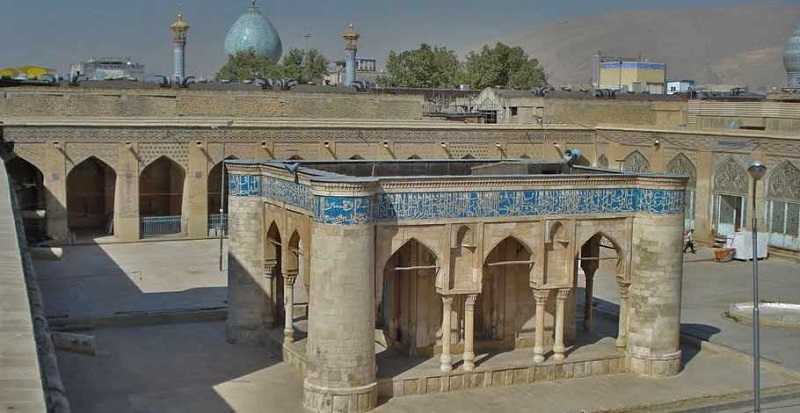The Ancient Mosque of Shiraz is like any other historical building for those who are not familiar with Shiraz and its seven wonders. Perhaps, when you hear the name of this mosque for the first time, you may not think about its great history and storytelling behind it. The myths that people have about this mosque are strange and, of course, its architecture is even more unusual.
The Ancient Mosque truly has a strange fate and a great history. People’s statements can reveal the significance and importance of this mosque. The importance of the mosque to the people of Shiraz is equal to that of the Kaaba. Just as incredible stories have been told about the Kaaba, this mosque also has its place in legends.
If you see the architecture of the mosque in pictures or up close, you will be fascinated by its architecture and innovation in design, but if you read its history, you will fall in love with it. The Ancient Mosque was built during the reign of Amr Leeth. Amr Leeth was one of the good rulers of Saffarids. If we want to evaluate his resume with one instruction, which is the reconstruction of this historical building, he deserves praise. I don’t care why this building was built, whether it is called a mosque or a fire temple, its authenticity pours out of every corner and everything authentic is praiseworthy.

People in Shiraz, regardless of their ethnicity and beliefs, worship and respect the Ancient Mosque just as they admire Persepolis and Shah Cheragh. You may have heard that when someone succeeds, they attribute their success to themselves. The Ancient Mosque has similar conditions. Almost all religions that have existed in Shiraz dispute the main origin of the building and claim it as their own. Whatever it was before, now it is a mosque and is known by this name. So, visit it with the same vision and show respect for its history, not its name.
read more >> Nasir Al Mulk mosque
As mentioned, various religions attribute the main origin of the mosque to themselves. What historical evidence has shown is that the land and building of the Ancient Mosque were built on a fire temple or a structure that was once used for worship. The story of building this structure dates back to very ancient times, around 281 AH. This is where Amr Leth felt that his religious community needed a social base. What better place than a mosque? Everyone has religious respect for it, and from an architectural point of view, it can accommodate a large number of people. Perhaps he himself did not think that such a masterpiece would emerge from the water and that God would create such forgiveness for him, but it happened…
From the beginning, the Ancient Mosque of Shiraz became a social base for Muslims. A place for writing, studying, and interpreting the Quran, a place that introduced wonders like Hafez to the world of science and art. The Ancient Mosque was not just for praying and worshiping, otherwise someone like Hafez would not have grown up there according to historical evidence.
In fact, this mosque was the first social-religious base in Shiraz. Everyone gathered there to reach a conclusion, consult about something or have a conversation. This led architects to consider six locations for the entrance doors of the mosque in different sides.

As previously explained, the mosque is built on the remains of an older building. This fact has been proven by historical evidence and also by comparing the mosque’s architecture with other contemporary structures. Many believe that the overall design of this structure already existed and the architects of the time, such as Amr ibn Leith, only reconstructed it.
However, this is not true for the central building of the mosque, since this structure did not exist at all and was ordered to be built by another king. The central building, or Dar al-Mus’haf, was constructed in 752 under the orders of King Isaac Injush and its construction was completed under the supervision of the best architects.
Most of the materials used in the construction of this building are plaster, stone, and tiles. Of course, it should be noted that raw materials have no beauty, but when they are used by Iranian architects, they become attractive. Many of the materials used in this building, especially those with external appearances, are tooled. Plastering, engraving, stonework with high precision and more can be seen abundantly in every corner of the mosque.
At first glance at the entire building, the number of entrances to the mosque catches the eye. There are six surrounding the mosque which are the entrance to the holy shrine of Atiq. They are attached to the walls surrounding the mosque with 10-meter-wide porches, iwans, domed chambers, etc. This type of construction has caused the center of the mosque to be like an empty field, a place for sitting and gathering people.